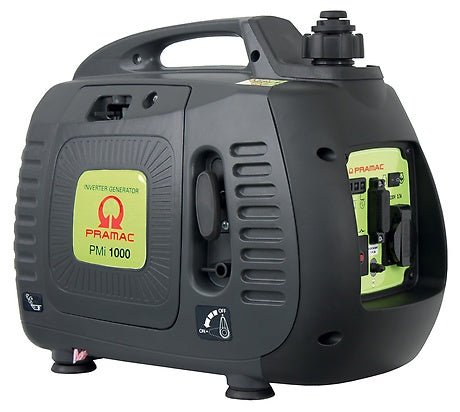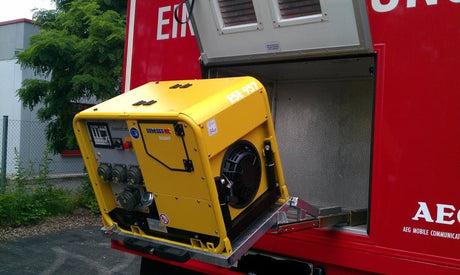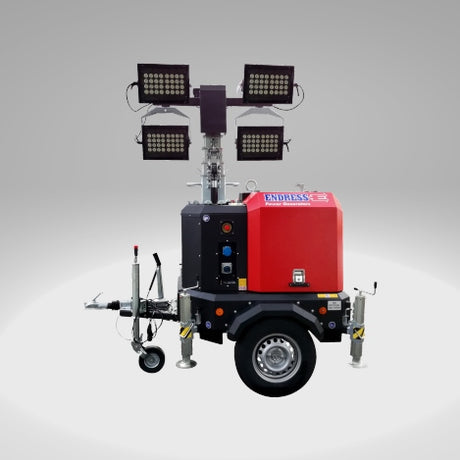Generators
The generator is the part of the electricity generator that converts the engine's kinetic energy into electrical energy. Also often colloquially referred to as an alternator or dynamo. There are different types of generators, such as asynchronous generators and synchronous generators. In addition, the voltage and frequency are regulated in different ways. Only synchronous generators are predominantly used in power generators.
Asynchronous generators are usually three-phase asynchronous machines with squirrel-cage rotors. In order for the asynchronous machine to be used as a generator, it must be magnetically excited. A capacitor control is usually used for this. Asynchronous generators cannot be overloaded and are suitable for consumers with only low starting currents (e.g. ohmic consumers).
Synchronous generators consist of the stator with 2 or more coils and the rotor (also called rotor). The rotor speed runs synchronously with the mains frequency. At 50 Hz mains frequency, the rotor rotates at 3000 revolutions per minute (high-speed) or 1500 revolutions per minute (slow-speed). Speed and mains frequency are related, so that the attached combustion engine must always run at the specified speed of 3000 or 1500 revolutions per minute.
It usually consists of a coil and creates a rotating magnetic field due to the current flowing through it. The stronger the magnetic field, the more energy is induced into the stator coils. If consumers are connected to the generator, the current in the rotor must be increased so that 230 V or 400 V voltage is still available.




